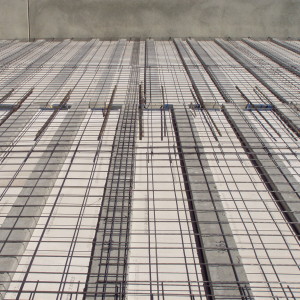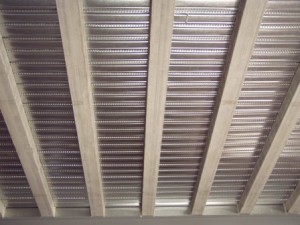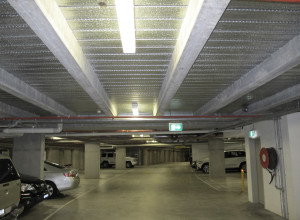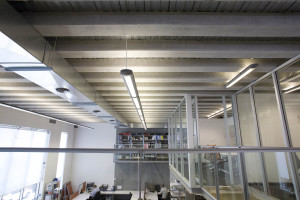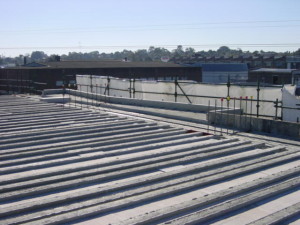Commonly known as Ultrafloor, this composite flooring system is comprised of precast, prestressed concrete inverted tee-beams, spaced apart with infill panels spanning between the flanges of the beams. The floor is completed with a lightly reinforced in-situ concrete topping which, when hardened, utilises its compressive strength and acts compositely with the tensile strength of the precast beams to efficiently carry the design loading of the floor.
Advantages
- Less expensive than other options
- Less reo, less concrete and many other savings
- Faster construction time
- Quick installation by highly skilled crews
- Immediate access below for following trades
- Less weather dependent
- Reduction in formwork and propping
- Simplified and safer construction process
- Less trades on site
- Less exposure to OHS and industrial relations risks
- Less waste
- Less materials handling
- Superior structural outcome
- Longer spans (up to 12m)
- Thinner structural depth
- Reduction in building weight offers savings in vertical structure and in foundations
- Comprehensive design package included in scope
- Quality product
- Off-site manufacture means high quality
- A sustainable solution
- Significant sustainability advantages through de-materialisation (typically 30% less reo and 30% less concrete)
- Thermal mass benefit not available with other light weight flooring options
- Durable
- High strength, factory produced, long life precast concrete offers the ultimate outcome with minimal maintenance
- Fire thermal and acoustic advantages
- Services can be readily accommodated in ceiling void between beams, e.g. downlights.
Applications
- Commercial offices including high-rise
- Special structures (marine, stadia, monuments, etc.)
- Retail and bulky goods
- Airports
- Car parks
- Railways
- Multi-unit residential
- Correctional facilities
- Housing
- Noise walls
- Education
- Cinemas and theatres
- Health and aged care
- Retaining walls
- Clubs, libraries, churches and community centres
- Industrial – warehouses and factories



